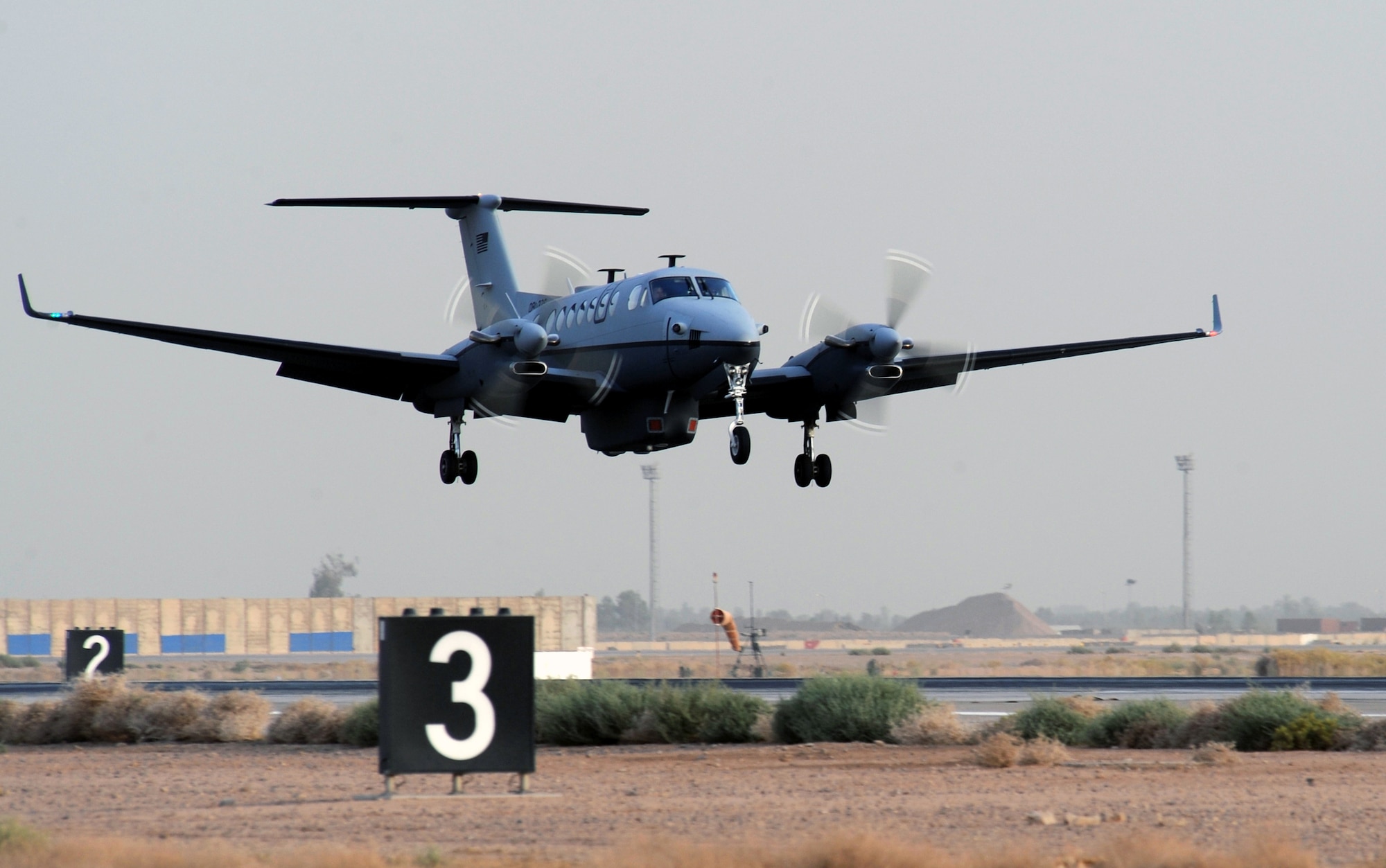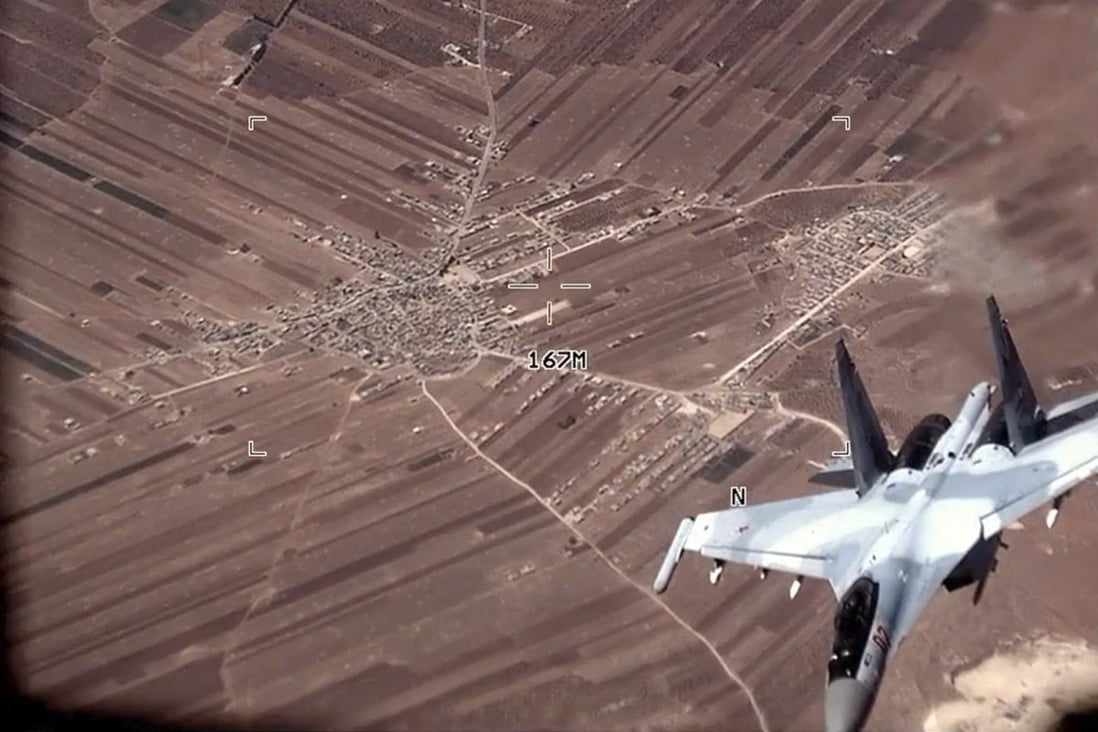In the latest episode of a series of alarming encounters between the air forces of two superpowers, a Russian fighter plane came dangerously close to a US surveillance aircraft over Syria.
Russia Unveils ‘Product 53’, A Next-Gen Kamikaze UAV That Expert Says Can Wipe-Off Entire Military Column
US officials have disclosed a concerning incident on July 17 involving a Russian fighter plane that flew in dangerous proximity to a US surveillance aircraft over Syrian airspace.
The incident compelled the American aircraft to navigate through the turbulent wake caused by the Russian fighter, threatening the lives of the four crew members on board.
The officials have characterized the incident, which happened shortly before noon on July 16, as a “significant escalation” in a series of encounters between American and Russian aircraft within Syrian airspace in recent weeks.
According to Washington, the interception carried out by a Russian Su-35 fighter jet posed a substantial obstacle to the safe operation of the US crew on board the MC-12 aircraft.

The MC-12 aircraft, a twin-engined turboprop commonly employed by special operations forces, was conducting surveillance missions to support operations against Islamic State groups in Syria.
Approximately 900 US forces personnel remain stationed in the country, while additional personnel rotate in and out to carry out specific missions to target militants affiliated with the Islamic State group.
In recent weeks, an alarming trend has emerged as Russian fighter aircraft consistently engaged in targeting US MQ-9 drones. These incidents even involved the Russian fighters deploying flares and compelling the drones to execute evasive maneuvers.
Nonetheless, what distinguishes this latest incident is the increased concern it has aroused due to the immediate jeopardy it placed on the crew of American military aircraft.
But the US authorities refrained from disclosing the proximity at which the Russian jet approached the US warplane.
During these encounters, US and Russian military officers maintain frequent communication through a deconfliction phone line, where they register protests regarding the actions of the opposing side.
Escalating Tensions And Close Encounters
There have been instances where fully armed Russian fighter jets have flown over American bases in Syria, raising concerns and tensions between the two nations.
While the US does not believe that Russian aircraft intends to attack US troops on the ground, there is apprehension regarding the potential targeting of Reaper drones. The US government believes that Moscow’s perception is that such actions may not elicit a strong military response from Washington.
One illustrative incident occurred in March, where a Russian Su-27 fighter jet reportedly sprayed jet fuel on a US surveillance drone and subsequently struck its propeller, resulting in the US military having to ditch the MQ-9 Reaper into the Black Sea.
This event significantly escalated tensions between the US and Russia, leading to a conversation between their defense chiefs. However, it did not result in a direct military response.
Meanwhile, Moscow has also conveyed its concerns regarding drone flights conducted by the US-led coalition over northern Syria, labeling them “systematic violations of protocols” established to prevent clashes between the respective militaries.

The Russian side has voiced unease about the frequency and nature of these drone operations, perceiving them as a breach of the agreed-upon protocols to maintain safe airspace and avoid unintended confrontations between the two forces.
According to the Associated Press, the heightened Russian military activity observed in Syria can be attributed to the growing collaboration and coordination among Moscow, Tehran, and the Syrian government.
This concerted effort aims to wield pressure on the United States to compel its withdrawal from Syria. This alignment of interests and actions underscores the complex geopolitical dynamics at play in the region.
The US sees Russia’s reliance on Iran’s support in the war in Ukraine as a factor that influences their actions. Tehran’s objective of wanting the US out of Syria is linked to its desire to facilitate the transfer of lethal aid to Lebanese Hezbollah and maintain a potential threat toward Israel.
Recently, US officials highlighted increased cooperation, collaboration, planning, and intelligence sharing between mid-level Russian and Iranian Quds Force leaders in Syria.
Thus, in response to the perceived threats from Moscow and Tehran, the US is augmenting its regional presence by employing different deterrent measures. This includes the deployment of advanced aircraft such as F-35s and F-22s, known for their advanced stealth capabilities, as well as the presence of warships in strategic locations.
- Contact the author at ashishmichel(at)gmail.com
- Follow EurAsian Times on Google News




